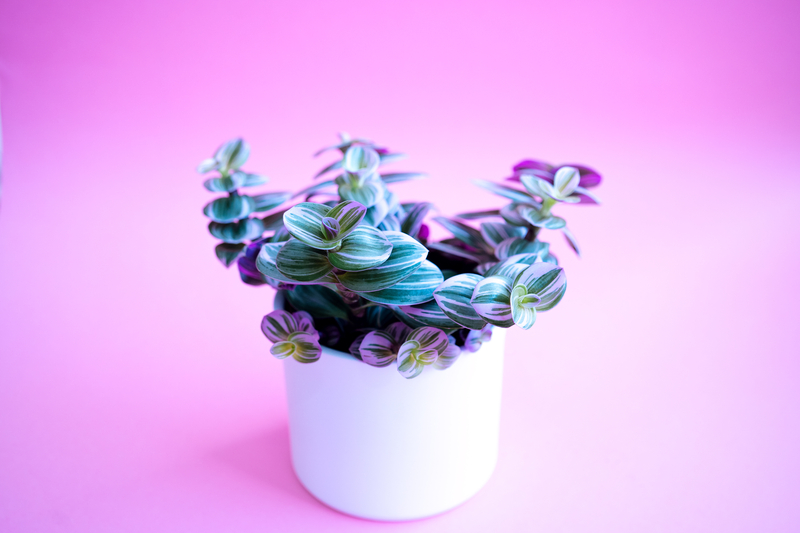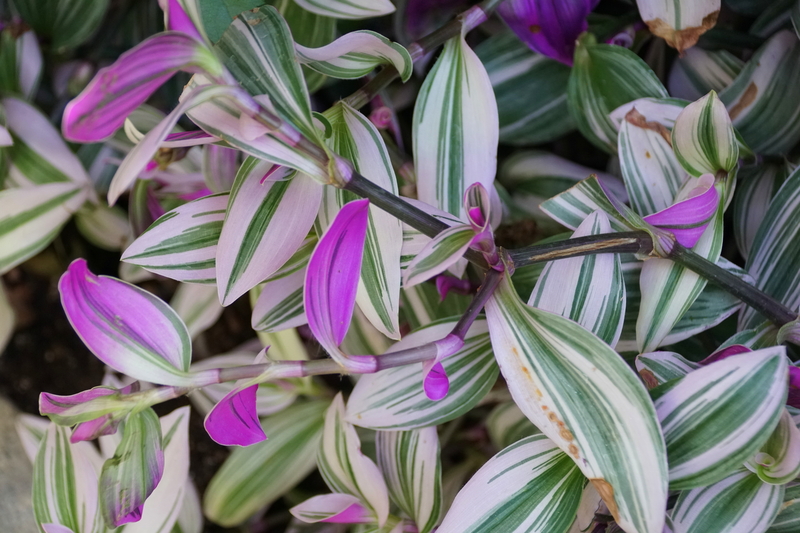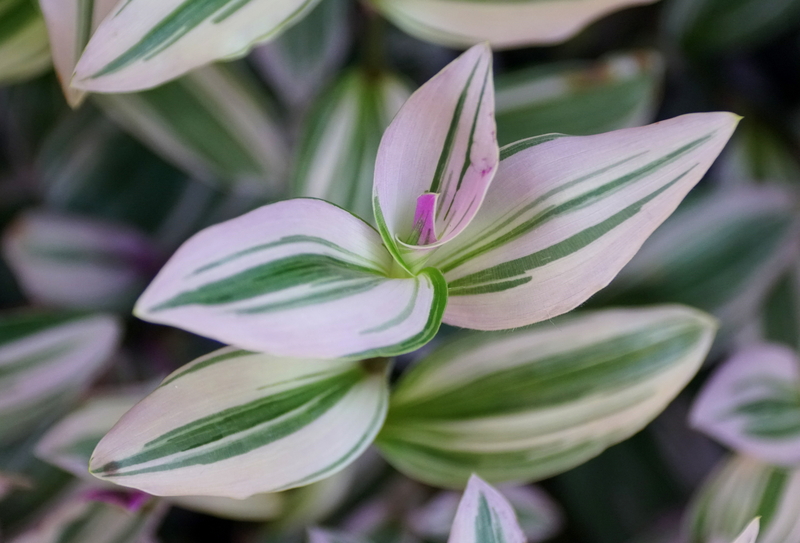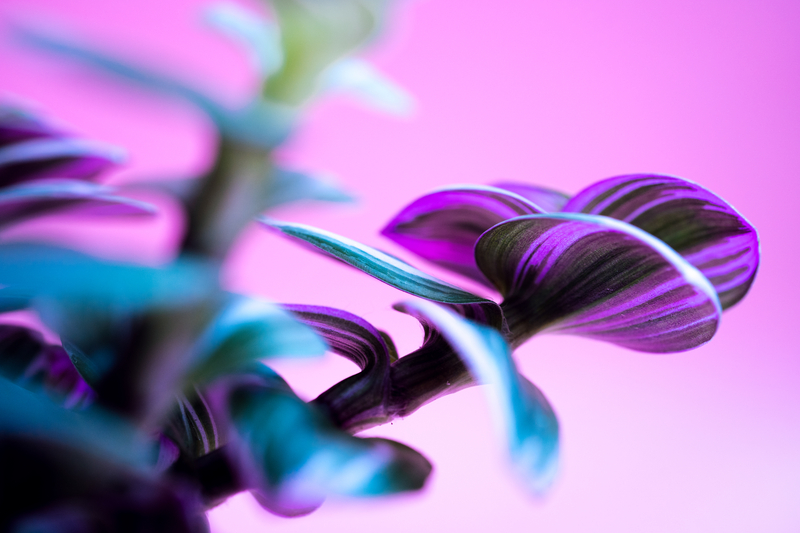The Nanouk or Tradescantia Nanouk Plant is the beautiful purple-white plant you might have seen on trendy Instagram feeds. Its beautiful purple flowers and ethereal purple-green-white color palette make it a stylish choice among customers looking for show plants. Patented in The Netherlands (yes, the flower capital!) in 2012, these plants were genetically modified to provide excellent durability, fast propagation, and breathtakingly pretty leaves and petioles. Here is all you need to know and more about caring for these plants.
Scientific Name
The scientific name of the Nanouk Plant is Tradescantia albiflora.
Other Names
- Fantasy Venice
- Spiderwort Plant
Different Types
Nanouk is a special variety of the Tradescantia plant developed by the selected cross-pollination of two Tradescantia albiflora seedlings. Different, naturally occurring varieties of the Tradescantia plant are in temperate regions in Mexico and South and Central America. Nanouk, on the other hand, originates from Sappemeer, Netherlands, where it was first developed.
What Soil Works Best for a Nanouk Plant?
Tradescantia Nanouk does best in a standard potting mix with added coarse sand, Orchid bark, and perlite. Ensure that the soil is well-drained to avoid waterlogging, which causes problems for the plant. Plant pots and containers with holes on the bottom work best for Nanouks.
How Much Sun Does a Nanouk Plant Need?
Bright, indirect light usually works best for Nanouk Plants. While these plants are genetically modified, they originate from naturally found plants in temperate regions. Considerate supplemental lighting should work just fine for them.
Keep this plant away from direct and harsh sunlight. If you notice the plant drying up or developing scorch marks on the leaves, move them to a well-lit region that’s away from direct sunlight.
What Temperature Works Best for Nanouk Plants?
Nanouk Plants do well in temperate to mildly-hot conditions with daytime temperatures reaching up to 75 F. The night-time temperatures should be around the mid-50s. Both extreme hot and cold temperatures can adversely affect the plant, but it should handle slight variations in temperature over time.
Do Nanouk Plants Enjoy Humidity?
The plants do not need humid conditions to thrive. They bloom well in average, room-temperature settings with apt humidity. They can, however, withstand humid conditions because of their thick, coated leaves.
How Often Should You Water a Nanouk Plant?
Nanouk Plants need watering once a week. Under cold/humid conditions, check if the topsoil is dry before watering. It is important not to overwater these plants because waterlogging can cause their roots to turn soggy and rot. Root rot ends up killing the vascular system in a short time.
What Size Do Nanouk Plants Grow To Typically?
Nanouk Plants are very compact and upright but show fast growth. They can reach a maximum height and width of three and a half inches within a few months. These plants have thick stems and leaves, making them resistant to temperature and humidity changes. Nanouk leaves have a furry underside that can look like a spiderweb, thus lending them the name spiderwort.
What are the Most Common Bugs for this Plant?
The most notorious pests that target Nanouk plants are spider mites. They usually lay eggs under the leaves, hatching and producing more pests that feast off the leaves. Giving the plant a freshwater shower helps with this. You should then mist it with a 50-50 solution of water and isopropyl alcohol.
What are the Most Common Diseases?
Root rot and fungal infections are the two most common problems Nanouk Plants face. Overwatering/poorly ventilated soil causes the roots to bloat and allows fungi to attach spores to them.
Can you Propagate a Nanouk Plant?
Propagation is a breeze with Nanouk Plants as they are genetically designed to be fast growers. A simple grafting – a technique where healthy shoots are cut off from the plant and planted in a new pot – is the best way to propagate a Nanouk Plant.
Can You Repot a Nanouk Plant?
Once the soil is out of nutrients, it is a good idea to repot your Nanouk Plant. Repotting this plant can be done every one-to-two years. You can check if the soil is dead by watching its water retention. Nanouk Plants in need of a repot will turn pale, a sign that your plant needs to be in a new container.
Why Are my Nanouk Plant Dropping Leaves?
While Nanouk Plants are tolerant to various temperatures, they can shed leaves under extreme hot or cold conditions. Make sure that your plant is away from direct sunlight and your air-conditioning/cooling vents. Another reason for your plant shedding leaves can be root-rot or other fungal root infections. Soggy or bubbling soil is the best indicator of this.
Conclusion: How to Take Care of a Nanouk Plant
Nanouk Plants are beautiful houseplants that can be the perfect centerpiece for your living room. Their majestic purple-white-green leaves give them a classy, exotic look that goes well with almost any ambient decor. While these plants are not too fussy about food or water, it is important to protect them from common diseases that can cause premature wilting. With just a little temperature and soil care, you can ensure your Nanouk plant stays healthy for a long time.
Similar Posts:
How to Take Care of a Dragon Fruit Plant
How to Take Care of a Cactus Plant
Are Coffee Grounds Good for Plants?
How to Take Care of a Dolphin Plant




